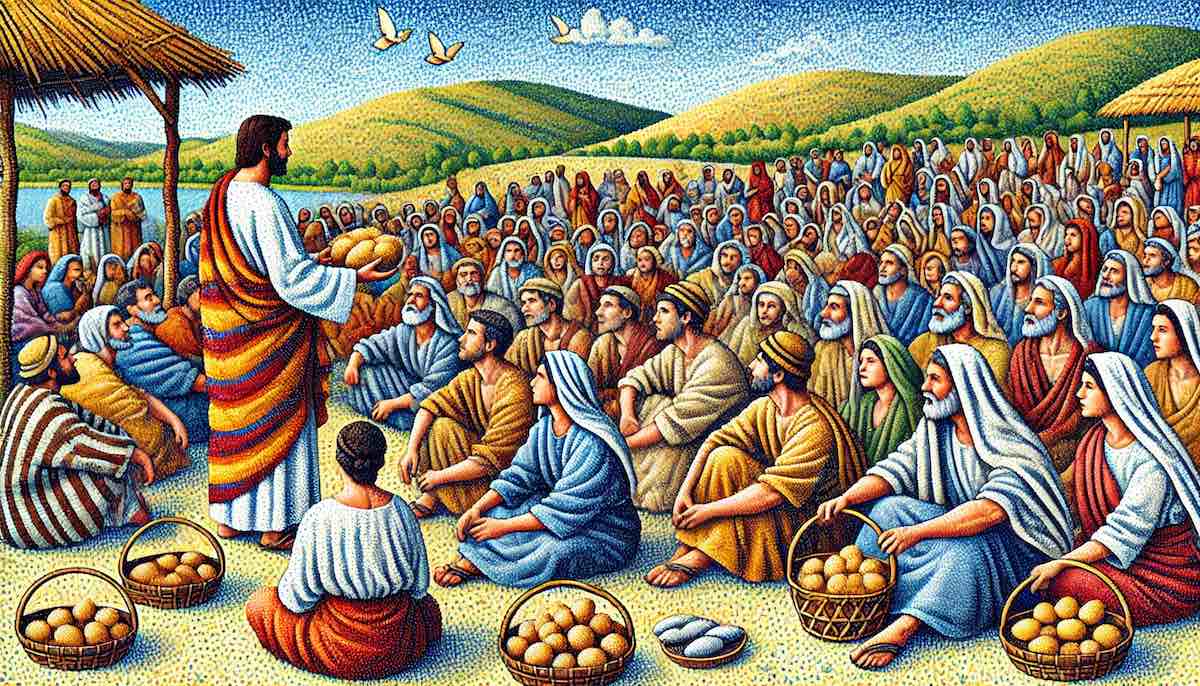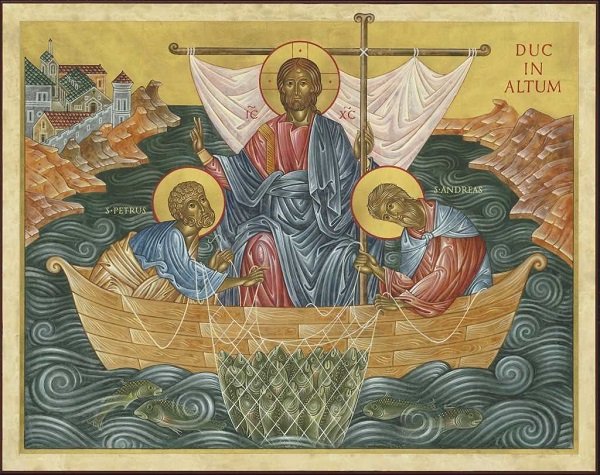The Gospel of John presents a distinct portrait of Jesus compared to the Synoptic Gospels (Matthew, Mark, and Luke). While the Synoptics gradually reveal Jesus’ divine identity, John unveils it from the outset. In John, long discourses replace parables, and the narrative centres on Jerusalem rather than Galilee. These differences have sparked scholarly debates over the historicity, authorship, and origins of John’s Gospel, often referred to as “The Johannine Question.”
John’s Unique Approach to Jesus’ Divinity
The Synoptics depict Jesus’ unity with the Father as a hidden mystery gradually unfolding. Jesus’ adversaries discern this truth through confrontation, while his disciples slowly perceive it through intimate experiences, like witnessing his prayers. By contrast, John presents Jesus’ divinity explicitly and unambiguously. His divinity is revealed not just in what he does but in who he is; Jesus openly identifies himself as the Son of God. This stark portrayal has led some scholars to question the historical authenticity of John’s account, suggesting that it represents a later theological interpretation rather than a reliable historical record.
In John, Jesus speaks through “extended discourses built around images,” a style that contrasts with the parables and shorter teachings found in the other Gospels. The geographical focus also shifts predominantly to Jerusalem, setting John apart in both form and content. These features initially led modern scholars to dismiss John’s Gospel as a theological construct lacking historical grounding, with Rudolf Bultmann, a prominent 20th-century scholar, claiming it had roots in Gnosticism. However, recent scholarship has challenged this view, revealing John’s deep connection with Jewish traditions.
Refuting Gnostic Origins
Bultmann’s assertion that the Gospel of John draws from Gnostic ideas has been widely critiqued. He argued that concepts like the incarnation of the Logos (Word) were borrowed from Gnosticism. Yet, as Benedict points out, Bultmann’s arguments are based on sources dating later than John’s Gospel. Martin Hengel, another respected scholar, has shown that “Gnosticism is first visible as a spiritual movement at the end of the first century A.D.,” with its full development only occurring in the second century. Therefore, attributing Gnostic influence to a text that predates this movement is problematic.
Benedict argues that John’s Gospel is fundamentally Jewish, deeply rooted in the Old Testament. The text often refers to Moses, and Jesus’ mission is portrayed as the fulfilment of the Law and the Prophets. The Gospel’s language, far from being Gnostic, reflects the Jewish piety and cultural milieu of the time, written in “simple unliterary koine Greek” commonly spoken in Jerusalem. This perspective not only affirms John’s Jewish roots but also supports the notion that the Gospel could have originated within a Jewish-Christian community familiar with Jerusalem’s priestly aristocracy.
The Historical Foundations of John’s Gospel
The discovery of Egyptian papyri dating back to the early second century has helped to establish that John’s Gospel was composed in the first century. This refutes the claim that it was a later theological invention. Benedict highlights that modern scholarship has confirmed “the extraordinarily precise knowledge of times and places” found in the Gospel, indicating its origins from someone with firsthand experience of the region and events.
John’s Gospel also employs a unique understanding of historical truth, which is not about providing a verbatim transcript of Jesus’ words but rather presenting a truthful rendering of his message and identity. As Benedict explains, the Gospel “correctly rendered the substance of the discourses,” allowing readers to encounter “the authentic figure of Jesus.” This notion of history aligns with how the Church understands “remembering,” much like Mary, who “kept all these things in her heart” (Luke 2:19). The Gospel’s historical reliability is thus grounded in a theological memory that captures the essence of the events, rather than a mere literal recounting.
The Johannine Authorship Debate
Traditionally, John, the son of Zebedee, has been regarded as the beloved disciple and author of the Gospel. The Gospel itself claims eyewitness authority, asserting, “He who saw it has borne witness—his testimony is true” (John 19:35). Yet, the narrative never explicitly names John as the beloved disciple, leaving the identity shrouded in mystery. Some scholars have proposed that a figure known as “John the Presbyter,” mentioned by early Church historian Papias, may have played a role in shaping the Gospel.
Benedict suggests that while the beloved disciple’s experiences form the Gospel’s foundation, “Presbyter John” might have had a hand in its final composition, acting as a “literary executor” of the disciple’s legacy. This connection between the beloved disciple and the Johannine community, possibly based in Ephesus, adds a layer of complexity to the authorship question, indicating a process of collective memory shaped within a close-knit circle of Jesus’ followers.
The Role of Liturgical Context
Another distinctive aspect of John’s Gospel is its alignment with the Jewish liturgical calendar. The narrative frequently references Jewish feasts, with major events occurring during Passover, the Feast of Tabernacles, and the Feast of Dedication. This pattern not only reflects the Jewish roots of Jesus’ ministry but also lends the Gospel a liturgical dimension.
For example, the feeding of the 5,000 is set around Passover, connecting Jesus’ miracle to the exodus and the manna in the wilderness. Similarly, the high-priestly prayer at the Last Supper echoes the theology of the Feast of Atonement, emphasising Jesus as the ultimate high priest who intercedes for humanity. Understanding John’s use of these feasts deepens our appreciation of the Gospel’s message, revealing a theology intertwined with salvation history and creation.

Memory, Inspiration, and the Truth of John’s Gospel
The Gospel of John offers more than a historical account; it provides a theological reflection grounded in collective remembrance. The Gospel’s emphasis on “remembering” points to a process in which the disciples, under the Holy Spirit’s guidance, penetrate the deeper meaning of Jesus’ life and words. This spiritual dimension transforms mere recollection into a means of entering “all the truth” (John 16:13).
Benedict draws a parallel with Luke’s depiction of Mary’s “pondering” in her heart, suggesting that this form of memory is central to understanding the events’ spiritual significance. The process of inspiration in John’s Gospel, therefore, involves the interplay of personal recollection, community tradition, and the Holy Spirit’s illumination. The Gospel is a “pneumatic” text that seeks to reveal Jesus as the eternal “I am,” offering a true representation of his divine and historical reality.
Conclusion: Embracing the Johannine Witness
The Johannine Question challenges us to consider the nature of historical truth and theological insight. John’s Gospel, with its vivid imagery and profound discourses, provides a unique and essential witness to the person of Jesus. It invites readers into a deeper understanding of his divine identity, not by departing from history but by revealing the truth within it. As Benedict concludes, the Gospel of John “truly shows us who Jesus was” and remains a vital source for encountering the living Christ.
In addressing the debates surrounding the Gospel’s origins, historicity, and authorship, it becomes clear that John’s account offers not only a credible historical foundation but also a theological depth that enriches Christian faith.
See the other chapter reviews of the first volume on Jesus of Nazareth here.



